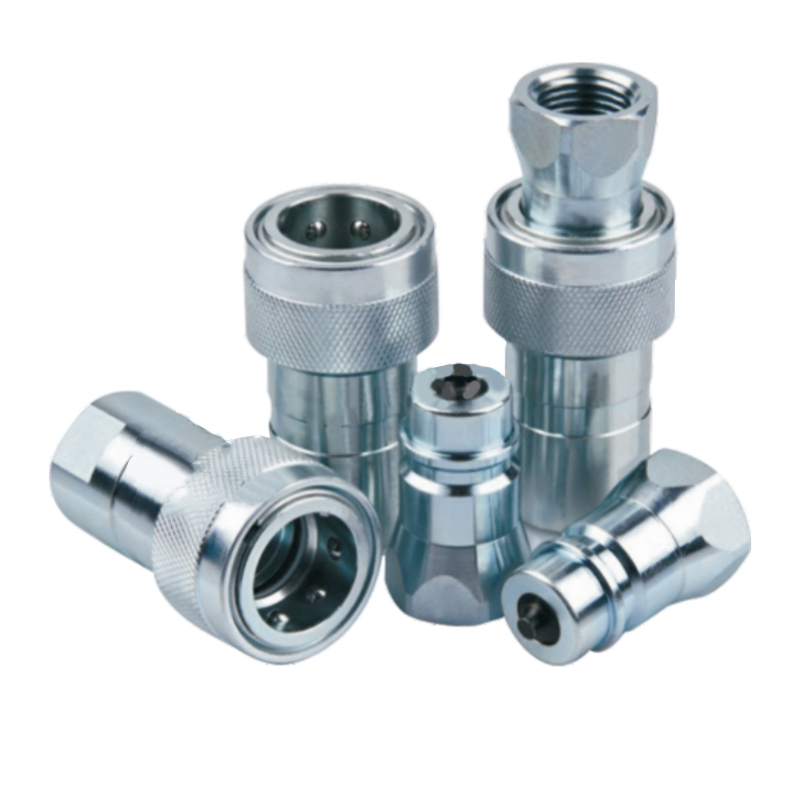Call us
+86-13732136622
+86-15058221666

Quick release couplings ensure a leak-proof connection through several design features and mechanisms:
Sealing Mechanisms: Quick release couplings use high-performance seals or O-rings to create a leak-proof connection. These seals are typically made from durable materials such as rubber, nitrile, or Viton, chosen for their excellent resistance to wear, chemical corrosion, and temperature fluctuations. When the coupling is engaged, the seals are compressed, forming a tight, secure barrier that prevents fluid from escaping. The design and material of these seals are crucial, as they must maintain their integrity under a variety of operating conditions, including high pressure and temperature variations.
Precision Engineering: The components of quick release couplings are manufactured with high precision to ensure an exact fit between mating parts. Advanced CNC machining and other precision engineering techniques are employed to achieve the tight tolerances necessary for a leak-proof connection. This meticulous attention to detail minimizes any potential gaps or misalignments that could allow fluid to escape. By ensuring that the coupling halves align perfectly, manufacturers enhance the overall reliability and effectiveness of the seal.
Locking Mechanisms: Many quick release couplings feature robust locking mechanisms such as ball bearings, locking pins, or threaded connections. These mechanisms are designed to securely hold the coupling halves together under pressure, preventing accidental disconnection. The locking system ensures that once the coupling is engaged, it remains tightly connected, maintaining the integrity of the seal and preventing leaks. The design of these locking mechanisms is crucial, balancing the need for easy manual operation with the requirement for a secure, reliable connection.
Pressure-Activated Seals: In some quick release coupling designs, seals are pressure-activated, meaning they expand and create a tighter seal as the internal pressure increases. This dynamic sealing capability ensures that the coupling remains leak-proof even under high-pressure conditions. As the pressure of the fluid increases, the seal's material deforms in a controlled manner to enhance the seal's effectiveness. This feature is particularly important in hydraulic and pneumatic systems where maintaining a leak-proof connection under varying pressure is critical.
Double Sealing: To provide an extra layer of protection against leaks, some quick release couplings utilize a double sealing system. This design incorporates two independent seals that work together to ensure a leak-proof connection. If one seal were to fail, the second seal would act as a backup, preventing any fluid from escaping. This redundancy is especially valuable in applications where a leak could lead to significant operational issues or safety hazards, ensuring continuous, reliable performance.
Material Compatibility: The materials used for both the coupling body and the seals are selected based on their compatibility with the fluids being transferred. Factors such as chemical resistance, temperature tolerance, and mechanical strength are considered to ensure that the coupling can withstand the specific conditions of its application. Using compatible materials prevents degradation of the seals and coupling components, which could otherwise lead to leaks. This careful selection process is essential for maintaining the long-term integrity and performance of the coupling.
GT-C2 Close type hydraulic quick coupling

Poppet valves available to prevent uncoupled leakage.
Poppet valves open automatically when coupled, within rated working pressure, to keep the flow expeditely.
Critical parts are hardened for durability.
Dependable ball-locking mechanism holds the mating halves together.
Socket and plug are precision machined from solid bar stock.

GT-B1 closed double shut-off hydraulic quick couplings are a type of hydraulic coupling used to connect and disconnect hydraulic lines quickly and eas...
See Details
The GT-A2 closed-type thread locked hydraulic quick connect coupling sets are a type of hydraulic coupling used to quickly and easily connect and disc...
See Details
● New valve design, it cans resistance damage from high flow and the pressure of impulse that providing advanced performance. ● Machined from solid s...
See Details
The KZE-B thread sleeve locked type high pressure hydraulic quick coupling is a type of hydraulic coupling that is designed for high-pressure applica...
See Details
● Positive valve stop, the perch maintains valve alignment and provides metal to metal valve stop to ensure that the valves openfully, every time. ● P...
See Details
● Poppet valves avallable to prevent uncoupled leakage. ● Poppet valves open automatically when coupled, within rated working pressure, to keep the f...
See Details
Metal Parking Station For Plug GT-YCTSeries Quick Couplings.
See Details
Metal Parking Station For Socket GT-VF Series Quick Couplings.
See Details
Metal Parking Station For Plug GT-YAASeries Quick Couplings.
See Details
The GT-200T manual single shut-off pneumatic quick coupling is a type of coupler used in pneumatic systems to quickly and easily connect and disconnec...
See Details
Contact Us